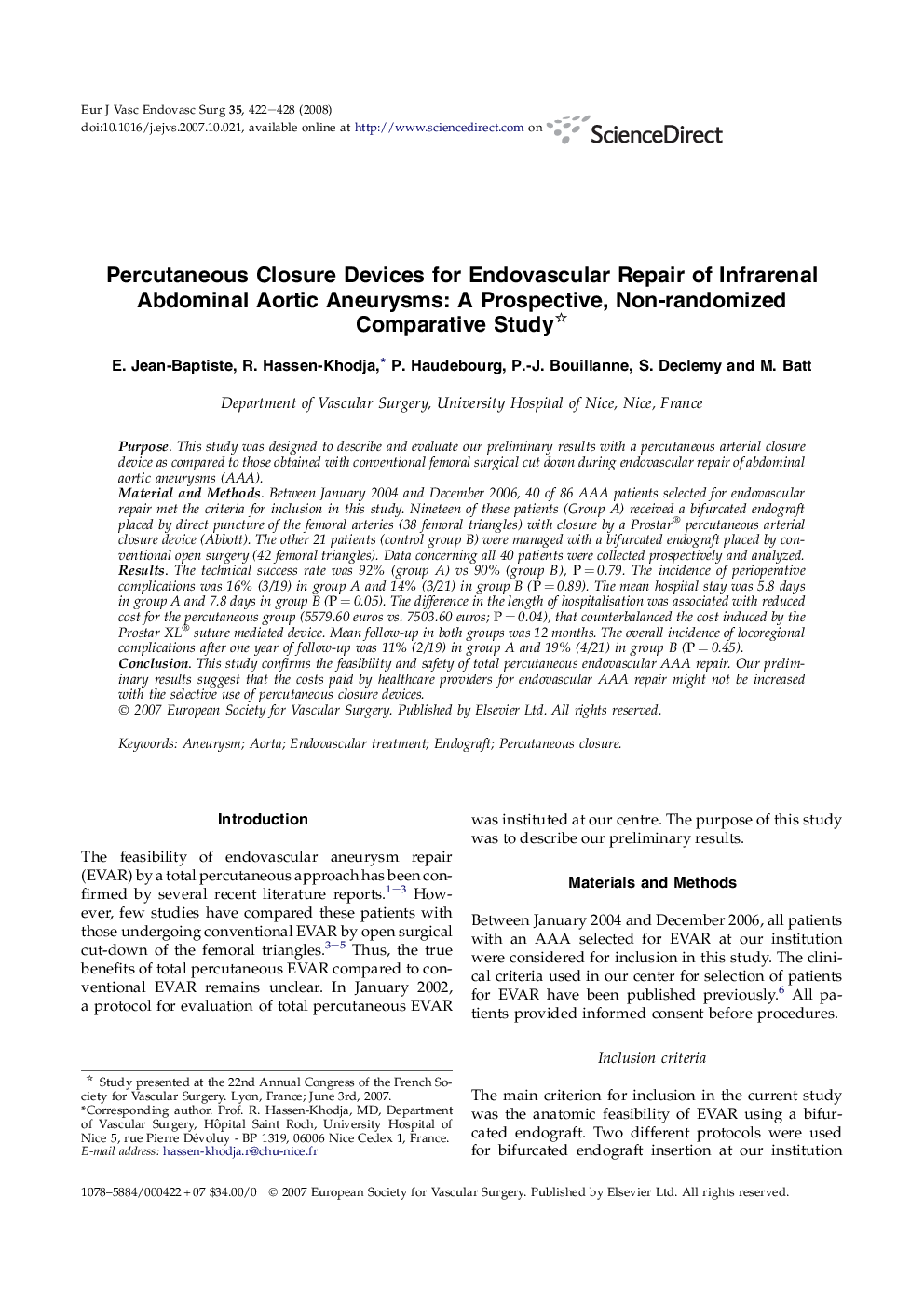| Article ID | Journal | Published Year | Pages | File Type |
|---|---|---|---|---|
| 2914012 | European Journal of Vascular and Endovascular Surgery | 2008 | 7 Pages |
PurposeThis study was designed to describe and evaluate our preliminary results with a percutaneous arterial closure device as compared to those obtained with conventional femoral surgical cut down during endovascular repair of abdominal aortic aneurysms (AAA).Material and MethodsBetween January 2004 and December 2006, 40 of 86 AAA patients selected for endovascular repair met the criteria for inclusion in this study. Nineteen of these patients (Group A) received a bifurcated endograft placed by direct puncture of the femoral arteries (38 femoral triangles) with closure by a Prostar® percutaneous arterial closure device (Abbott). The other 21 patients (control group B) were managed with a bifurcated endograft placed by conventional open surgery (42 femoral triangles). Data concerning all 40 patients were collected prospectively and analyzed.ResultsThe technical success rate was 92% (group A) vs 90% (group B), P = 0.79. The incidence of perioperative complications was 16% (3/19) in group A and 14% (3/21) in group B (P = 0.89). The mean hospital stay was 5.8 days in group A and 7.8 days in group B (P = 0.05). The difference in the length of hospitalisation was associated with reduced cost for the percutaneous group (5579.60 euros vs. 7503.60 euros; P = 0.04), that counterbalanced the cost induced by the Prostar XL® suture mediated device. Mean follow-up in both groups was 12 months. The overall incidence of locoregional complications after one year of follow-up was 11% (2/19) in group A and 19% (4/21) in group B (P = 0.45).ConclusionThis study confirms the feasibility and safety of total percutaneous endovascular AAA repair. Our preliminary results suggest that the costs paid by healthcare providers for endovascular AAA repair might not be increased with the selective use of percutaneous closure devices.
